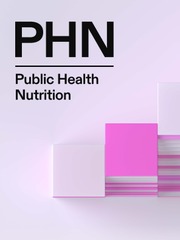No CrossRef data available.
Article contents
Dietary Intake and Micronutrient Adequacy among Adults in Rural Sri Lanka: Findings from a Cross-Sectional Baseline Survey
Published online by Cambridge University Press: 30 January 2025
Abstract
To characterize food group consumption, assess the contribution of food groups to energy and micronutrient intake, and estimate usual nutrient intake among adults in rural Sri Lanka.
A baseline survey (Dec 2020–Feb 2021) was conducted as part of an agriculture-based, nutrition-sensitive resilience program evaluation. Dietary intake was assessed using telephone-based 24-hour recalls (n=1283), with repeat recalls from 769 participants. Mean daily intake of food groups and their contribution to energy and nutrient intakes were calculated. The National Cancer Institute method was used to estimate usual intakes and the prevalence of adequate micronutrient intake (PAI). Differences by sex, district, and wealth were assessed using t-tests and ANOVA.
Forty-five rural villages throughout Sri Lanka.
Men and women from households in the program evaluation study area.
On average, grains and coconut milk provided 56% and 12% of energy, respectively. Rice, fish, dairy, and pulses were the primary sources of micronutrients. Participants consumed 118±117g vegetables and 71±243g fruit per day. PAI was <25% for calcium; zinc; niacin; folate; and vitamins B6, B12, and C, reflecting low consumption of animal-source foods (ASF; 80 g/day), whole grains, fruits, and vegetables (F&V). Significant differences in food group consumption by sociodemographic subgroup were observed among districts and wealth quintiles.
We observed high consumption of rice and coconut milk and low prevalence of micronutrient adequacy. We recommend increasing ASF, whole grain, and F&V consumption to close nutrient gaps, as well as research to identify effective solutions to increase micronutrient intake.
- Type
- Research Paper
- Information
- Creative Commons
- This is an Open Access article, distributed under the terms of the Creative Commons Attribution licence (http://creativecommons.org/licenses/by/4.0/), which permits unrestricted re-use, distribution and reproduction, provided the original article is properly cited.
- Copyright
- © The Author(s), 2025. Published by Cambridge University Press on behalf of The Nutrition Society


